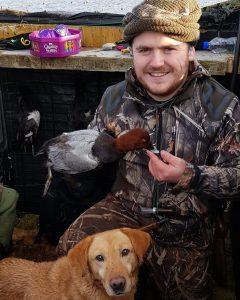Its The Small Things…
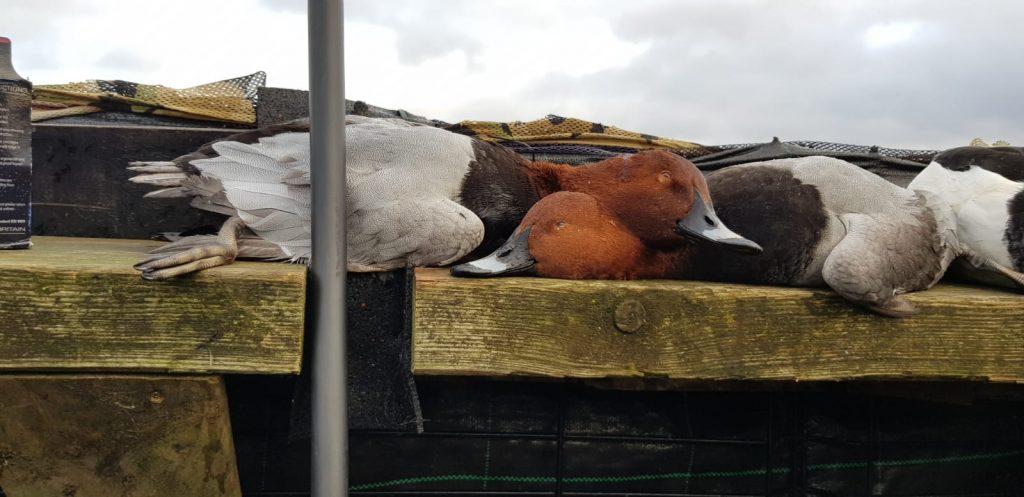
By Cathal Hughes (Pro Fire Widlfowling)
A morning wildfowling on Lough Neagh starts for me on a Friday evening shortly after finishing work in which I would have spent most of the day thinking on how I would be setting out the decoy spread. After methodically thinking and deciding on how the lay out would be with countless weather apps making the final decision for me.
My next step is to sort a packed lunch for the day ahead. Ham sandwiches and chicken soup have been a staple of the hide since I’ve been going to the Lough along with my dad. The “soup breaks” were one of my favorite parts of the morning and still are to this day.
The alarm goes off but I’m usually already up due to not being able to sleep with excitement and optimism for the morning ahead. The next step is warm clothes, thermals from head to toe is a must, especially from the end of October on & waterproof clothing is always a must in the hide at the end of the day its Ireland and it always rains. With the bags packed and everyone in the jeep its go time. I’m very lucky to have the Lough only 5 minutes away so the journey is short.
Once parked up we take the hike to the boat which again isn’t a long one. This is the part I like the most, the short few minutes’ walk where it’s just nothing but silence only the noise of the Lough gets louder and louder as we get closer & with all our gear finally into the boat we set out into a thick blanket of darkness with only a single head torch lighting the way. Again, we are lucky to only be a few minutes away from our hide location.
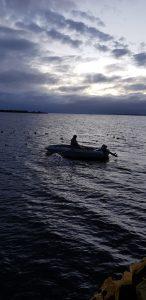
We unload all the gear into the hide and set off to set out our decoy spread in which we have spoken and talked about to death at this stage. Once the decoys are out and, in a pattern, we are all happy with, this usually takes just under an hour. Then the real fun begins, ear defenders in guns loaded time to watch the world come alive.
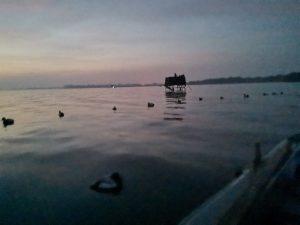
Things start slowly with the light getting brighter as the song birds start to sing, next there’s always a big fly of crows coming from their roost which is located on an island just South East of us which is a sign of things to come.
Then the ducks begin…with the low light Mallard and Teal take the full advantage with most of the them flying from behind off the land and coming onto the Lough. They are coming off various flight ponds that they have taken refuge on the night before. Shortly after that the Divers start their flight usually with singles coming in low and hard. My Grandad called them the scouts for the rest of the ducks and it was almost criminal if they were missed.
Most of the early ducks we get are a mix of Tufted duck & Scaup usually coming in low and hard. The Tufted duck commit hard and usually make up their minds on whether or not they will come in from far out. They have been known to be very easy to decoy. The Scaup can also be very easy to decoy but they have a tendency to take a few turns just on the edge of the decoy pattern before committing. This by no means makes the committing ducks any easier to get in front of. At times its almost harder to judge the speed and direction of a decoying duck as it is approaching.
The Tufted duck & Scaup keep the barrels warm and the eyes in all before there’s a small lull in the action just before 9am in which we call the “The 9 o’clock flight”.
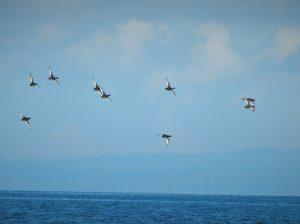
We have seen over the years for whatever reason at 9am on the dot in the early stages of the season there tends to be ducks everywhere it’s also when we start to see the Pochard (Red Heads) and Golden Eye start to move. In our hide the Pochard is king, it can be one of the most difficult ducks to decoy and what makes them even more special is their Iuminus red feathered head which runs into a grey back and belly, not to mention they are the tastiest duck of the diver family. So, it’s always a great day if we are lucky enough to harvest a few.
The Golden Eye being a close second with an all-white body accompanied by its black wings and black triangle shaped head with 2 small white dots just on each side of the head which almost looks like 2 cheeks. Its easily identified in the air with its white body as the big give away partnered with the triangle shaped head but as well as all that its wings make a high pitch whistle when it flies and in some parts of the states and UK they have the nickname as `Whistlers`. Unfortunately, they are regarded as one of the worst tasting ducks with a strong stale fish odor that can be very off putting to some. We tend to only harvest a few if we plan on getting one off to the taxidermist or sometimes, I like to try and see if I can make a recipe which can help with the taste which I have no luck with as of yet.
We set our own bag limit in our hide with there being no law on how many one gun can take unlike the Americans, I think people can sometimes get carried away with how many ducks they take home. We limit ourselves to 6 ducks each most mornings there’s only 3 guns in the hide with the most being 4 guns which leaves us with a bag of 18 – 24 ducks which is usually never the case. An amazing morning for us would be anything over 10. This isn’t to say that we are getting big numbers every Saturday, some days it’s all pot luck and we come home without even seeing a duck in close enough for a shot, it’s what happens when pursuing a wild animal.
We tend to stay on at the lough some mornings sometimes coming back on shore at 2pm. The first thing when we get home is make a small breakfast and laugh and joke at how we missed some easy shots as well as review some of the footage I capture for my own YouTube channel, after that its plucking and breasting time, usually working it in a conveyer belt type system with 2 men plucking and usually myself doing the breasting of the birds. We like to get them breasted out early and let the meat sit in cold salty water for up to 24 hours before vacuum sealing them for the freezer to be made into sausages or burgers for the summer time.
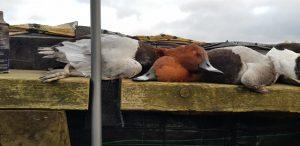
As I said it’s not about the number of ducks that are taken it’s about the comradery and laughter that goes along with the day. I am very lucky in the fact I get to spend a full morning wildfowling with my father on a shore where he spent his youth wildfowling with his father. It might not be an amazing shot that makes the morning amazing it might be seeing my dog make a heroic retrieve or hearing my dad’s stories of wildfowling when he was younger, whatever it is there’s always something that leaves us in tears of laughter which is why I hole heartly believe that wildfowling is one of the most amazing adventure one can take I hope someday to be able to take my own son or daughter onto the shores of Lough Neagh and pass down all the information and knowledge that’s been passed down to me.
